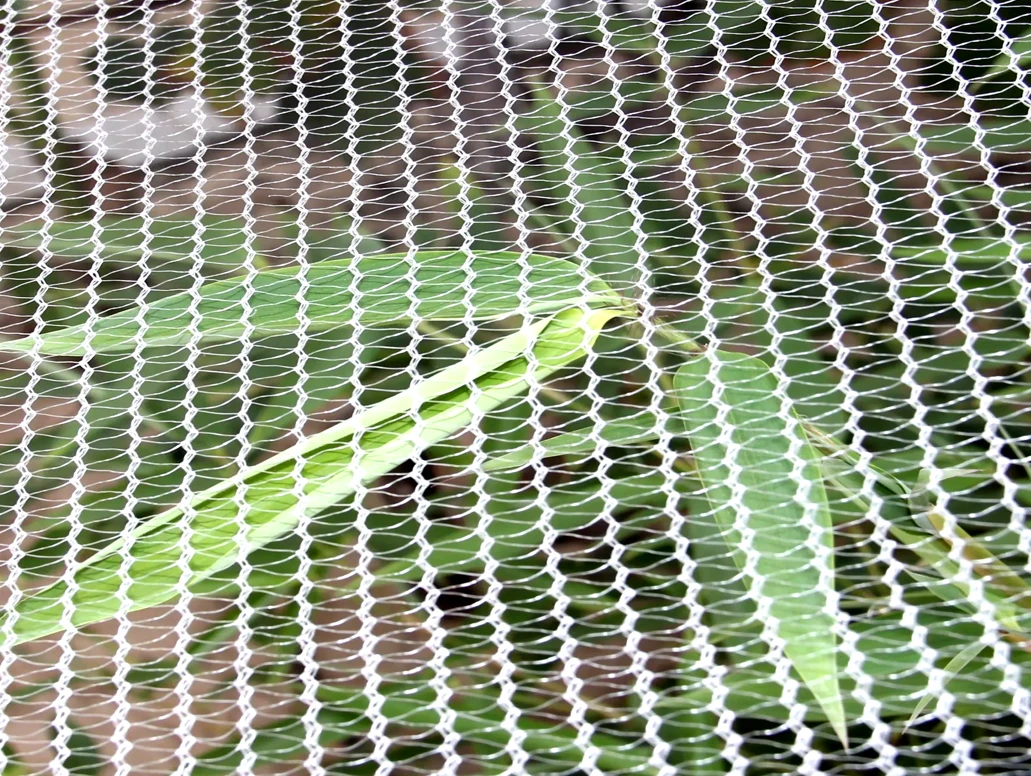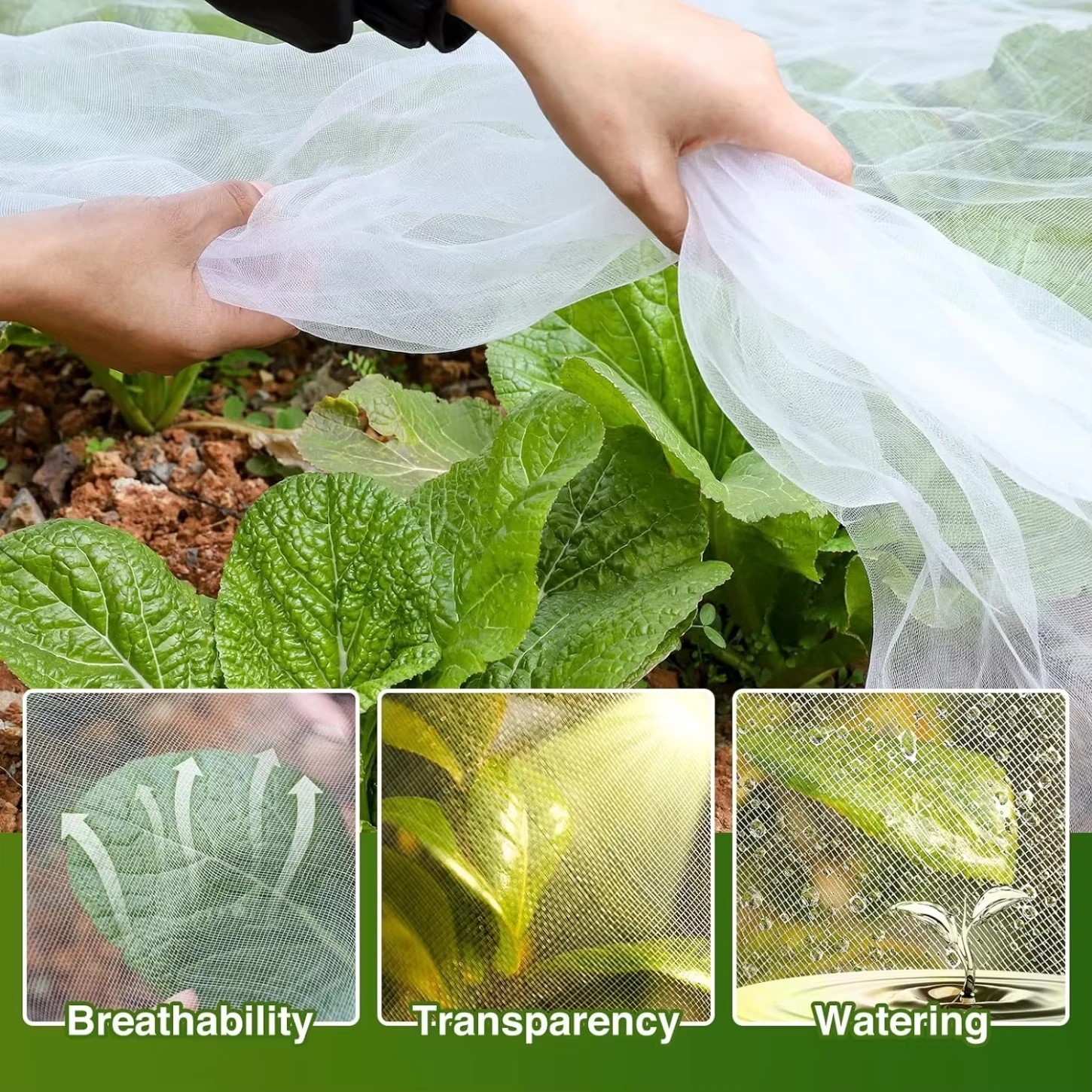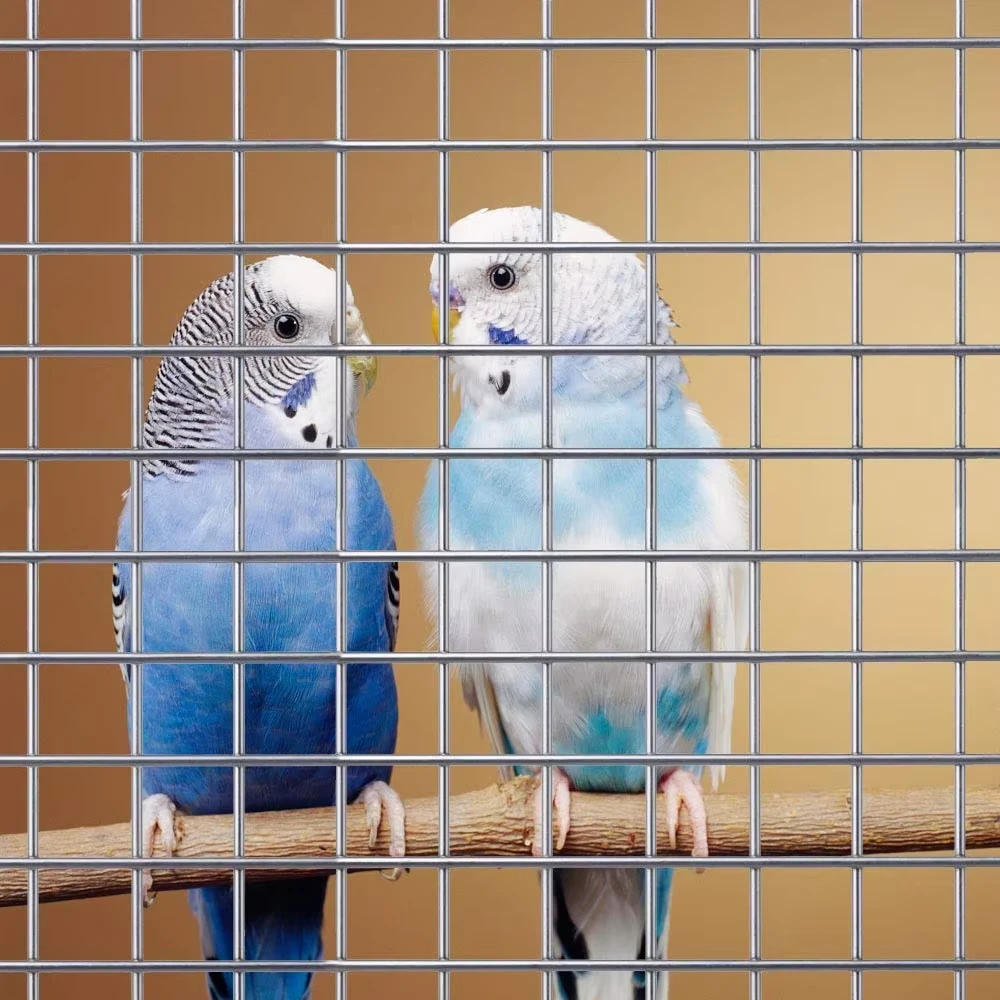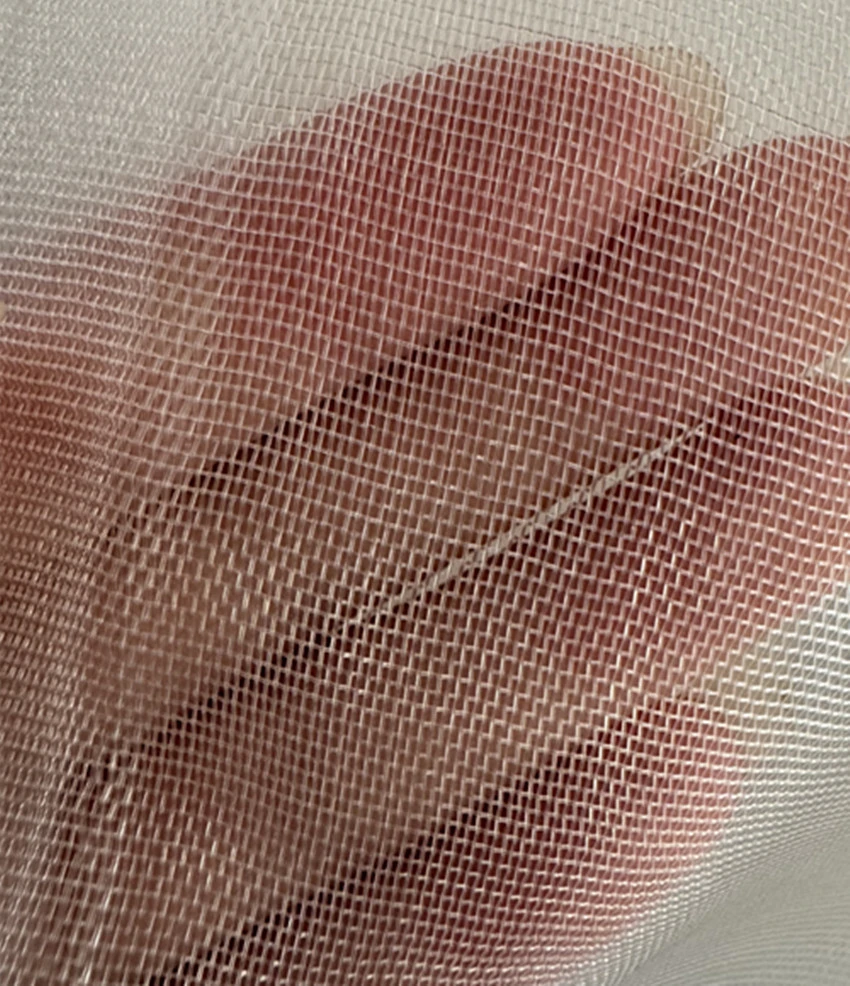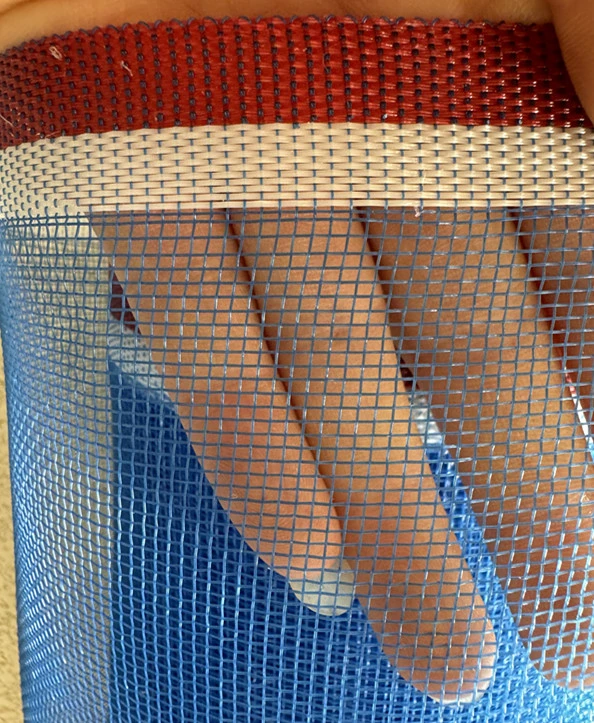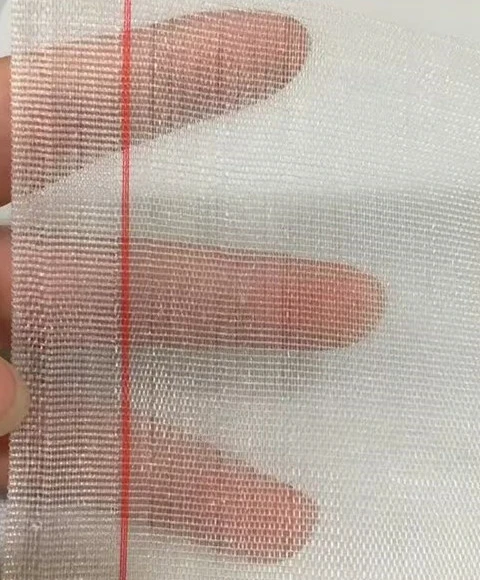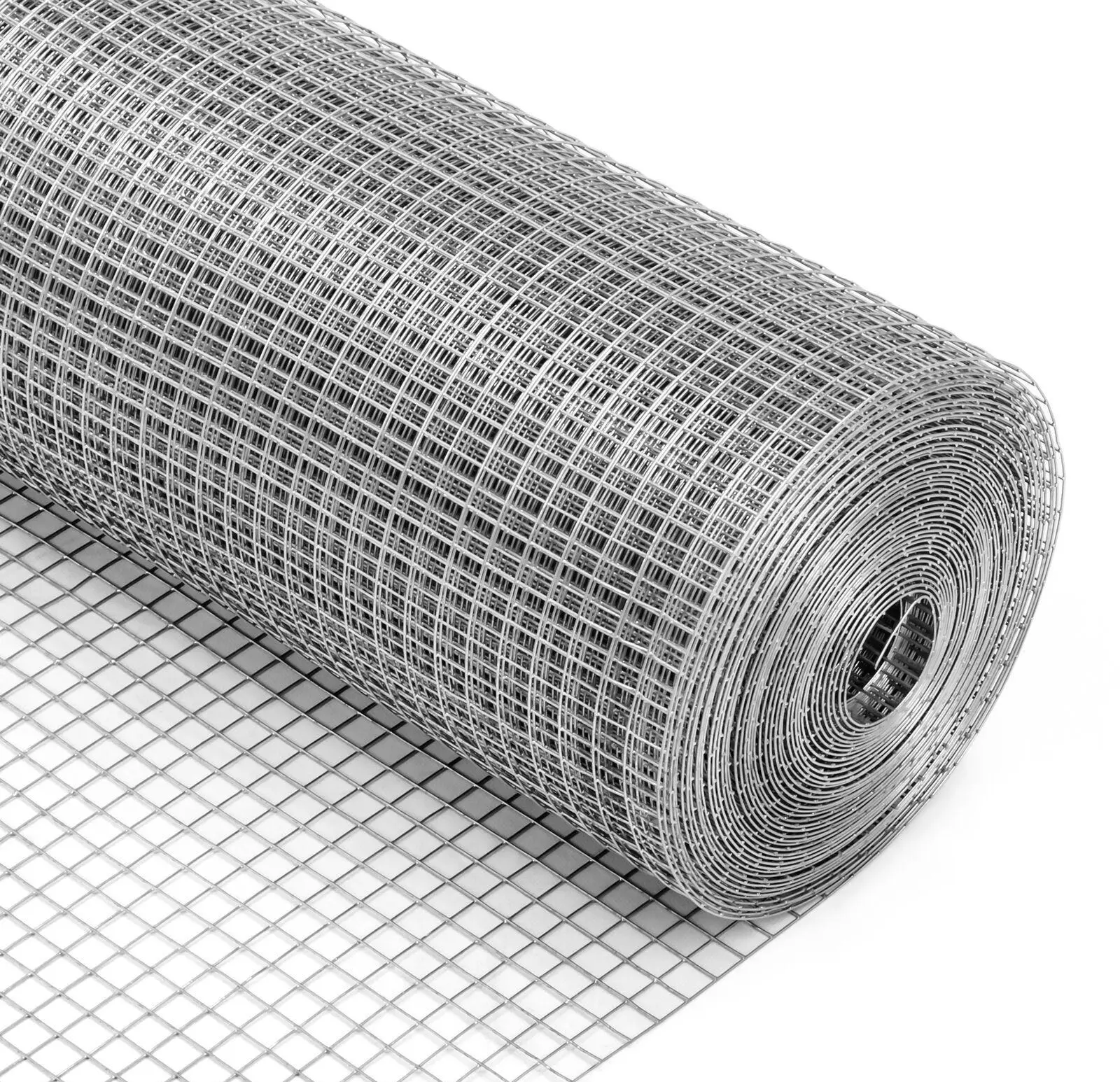Durable Bird Mesh Netting | Protect Crops & Gardens Effectively
Industry Trends and the Evolving Landscape of Protective Netting
The demand for robust and effective bird control solutions has seen a significant upsurge across various B2B sectors. From safeguarding agricultural yields to protecting sensitive industrial infrastructure, the strategic deployment of bird mesh is becoming indispensable. Industry analysis indicates a compound annual growth rate (CAGR) of approximately 6.5% for the global bird control market, driven primarily by increasing awareness of economic losses due to bird damage and stricter environmental regulations promoting humane pest management. Key drivers include the expansion of solar energy farms requiring protection for panels, the imperative for food safety in agriculture, and the need to prevent operational disruptions in manufacturing and warehousing facilities caused by avian presence.
Modern bird mesh solutions are evolving beyond simple physical barriers. Advances in polymer science have led to materials with enhanced UV resistance, greater tensile strength, and extended service life, reducing replacement cycles and total cost of ownership (TCO). Furthermore, specialized designs are emerging to address specific threats, such as mesh with smaller apertures for smaller bird species or reinforced perimeters for high-stress applications. The convergence of these technological advancements with a growing emphasis on sustainable and ethical pest control positions high-quality protective netting as a critical component in operational resilience and resource management.
Manufacturing Process Flow of Advanced Bird Mesh
The production of high-performance bird mesh, such as the 7 x 50 Feet Heavy Duty Bird Netting, involves a meticulously controlled process designed to ensure durability, structural integrity, and long-term efficacy. Our manufacturing protocol adheres strictly to international quality management standards like ISO 9001:2015, guaranteeing a product that meets rigorous performance benchmarks.
Process Steps:
- Material Selection & Preparation: We primarily utilize high-density polyethylene (HDPE) or high-grade nylon monofilaments, selected for their exceptional strength-to-weight ratio, chemical inertness, and inherent resistance to environmental degradation. Raw polymers undergo a stringent quality check for purity and consistency before processing.
- UV Stabilization & Additive Integration: To combat photodegradation, a critical factor for outdoor applications, specialized UV stabilizers and antioxidants are compounded with the polymer during the extrusion phase. This advanced formulation significantly extends the service life of the bird mesh, particularly in regions with high solar radiation.
- Extrusion & Monofilament Production: The treated polymer blend is extruded through precision dies to form uniform monofilaments. This process ensures consistent diameter and tensile properties, which are fundamental to the overall strength of the net.
- Netting Weaving/Knotting: Depending on the required mesh structure (knitted or knotted), the monofilaments are interlaced or mechanically knotted. Knotted netting offers superior break strength and structural stability, resisting unraveling even if individual strands are cut. Our heavy-duty variants often employ a robust knotted construction.
- Heat Setting & Stabilization: The fabricated net undergoes a controlled heat-setting process. This thermal treatment stabilizes the mesh dimensions, removes internal stresses, and enhances knot integrity, preventing shrinkage or distortion over time.
- Quality Assurance & Testing: Each production batch is subjected to comprehensive testing, including:
- Tensile Strength Test (ASTM D638): Measures the maximum stress the material can withstand while being stretched or pulled before breaking, ensuring resilience against external forces and bird impact.
- UV Resistance Accelerated Weathering Test (ASTM G154): Simulates long-term outdoor exposure to evaluate the material's degradation rate, crucial for predicting service life.
- Mesh Aperture Measurement: Ensures consistent opening size to effectively deter target bird species without trapping.
- Material Density & Weight: Verification of material composition and specifications.
- Finishing & Packaging: The approved bird mesh is cut to specified dimensions, rolled, and packaged to prevent damage during transit. Labeling includes product specifications, batch numbers, and installation guidelines.
This rigorous process guarantees a product with an estimated service life of 5-10 years under typical outdoor conditions, making it ideal for target industries such as agriculture, aquaculture, solar energy, petrochemicals, and general industrial facilities, offering advantages like energy saving (by preventing damage to solar panels or equipment) and exceptional corrosion resistance due to the inert nature of the polymer materials.
Technical Specifications: Heavy Duty Bird Netting
Our 7 x 50 Feet Heavy Duty Bird Netting Protective Garden Netting is engineered for superior performance and longevity. The following table details the critical technical parameters that define its robust capabilities and adherence to industry standards.
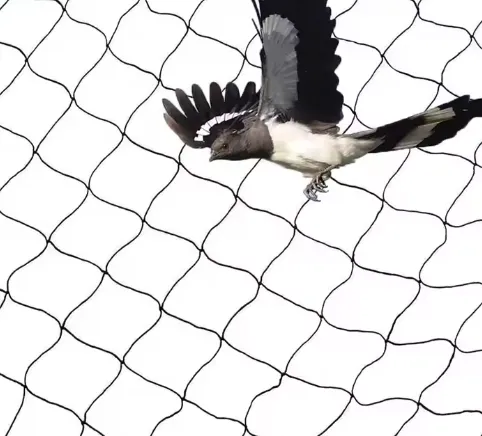
Figure 1: High-strength polymer fibers used in bird mesh production.
| Parameter | Specification (7 x 50 Feet Heavy Duty Bird Netting) | Industry Standard / Test Method |
|---|---|---|
| Material | 100% Virgin UV Stabilized High-Density Polyethylene (HDPE) | ISO 1872-1:2007 (Plastics - Polyethylene (PE) moulding and extrusion materials) |
| Dimensions | 7 feet x 50 feet (2.13 meters x 15.24 meters) | Manufacturer Specific |
| Mesh Size (Aperture) | Approximately 3/4 inch (19 mm) square mesh | Visual/Gauge Measurement |
| Construction | Extruded, UV-treated, Black, Flexible | Manufacturing Process Standard |
| Tensile Strength | > 250 lbs per 100 sq ft (approx. 113 kg) | ASTM D638 (Tensile Properties of Plastics) |
| UV Resistance | High (5+ years protection against solar degradation) | ASTM G154 (Fluorescent UV Apparatus) |
| Chemical Resistance | Excellent against acids, alkalis, salts, and common agricultural chemicals | ISO 22088-2:2006 (Resistance to Environmental Stress Cracking) |
| Operating Temperature Range | -40°C to +80°C (-40°F to +176°F) | Manufacturer Specific |
| Service Life Expectancy | 5-10 years (depending on environmental conditions) | Field Performance Data |
These specifications underscore our commitment to delivering superior quality in every bird mesh product, ensuring long-term protection and cost-effectiveness for our B2B clients.
Diverse Application Scenarios
The versatility of our protective bird mesh makes it an ideal solution across a multitude of industrial and commercial environments where avian control is paramount. Preventing a bird in net situations and ensuring facilities remain operational and clean are critical for many sectors.
Key Application Areas:
- Agriculture & Horticulture: Essential for protecting high-value crops (e.g., vineyards, fruit orchards, berry farms) from pecking damage, which can lead to significant yield losses. It's also deployed over aquaculture ponds to shield fish stocks from predatory birds. This direct protection ensures higher harvest quality and quantity, contributing directly to profitability.
- Solar Energy Farms: Large solar arrays are attractive roosting and nesting sites for birds. Droppings can significantly reduce panel efficiency (up to 20-30%) and necessitate costly cleaning. Our bird mesh creates an effective exclusion zone around and under panels, preventing damage and maintaining optimal energy production.
- Warehousing & Manufacturing Facilities: Birds entering large open structures can contaminate products, damage equipment, and pose health risks. Installing a robust net for birds at entry points or across internal rafters effectively denies access, ensuring product integrity and a hygienic operational environment. This application is crucial for compliance with food safety and industrial cleanliness regulations.
- Architectural & Building Protection: For commercial buildings, bridges, and architectural features, bird mesh prevents roosting and nesting, which can lead to aesthetic damage from droppings, structural degradation, and costly recurring cleaning. It maintains the building's facade and prevents damage to HVAC units or other rooftop equipment.
- Waste Management & Landfills: Preventing birds from scavenging at landfills or waste transfer stations reduces the spread of disease and mitigates nuisance issues. Large-scale netting solutions can effectively manage avian populations in these critical public health areas.
- Public Spaces & Stadiums: In open-air venues or covered stadiums, netting ensures a clean and undisturbed environment for patrons by preventing birds from entering seating areas or perching on structural elements.
These diverse applications underscore the critical role of specialized netting solutions in maintaining operational efficiency, product quality, and compliance standards across various industries. Deploying a high-quality bird mesh offers a humane, long-term, and cost-effective strategy for avian management.
Technical Advantages and Performance Metrics
Our heavy-duty bird mesh stands apart due to its superior technical advantages, engineered to provide unparalleled performance and long-term value in demanding B2B environments. These advantages translate directly into lower operational costs, enhanced asset protection, and greater peace of mind for our clients.
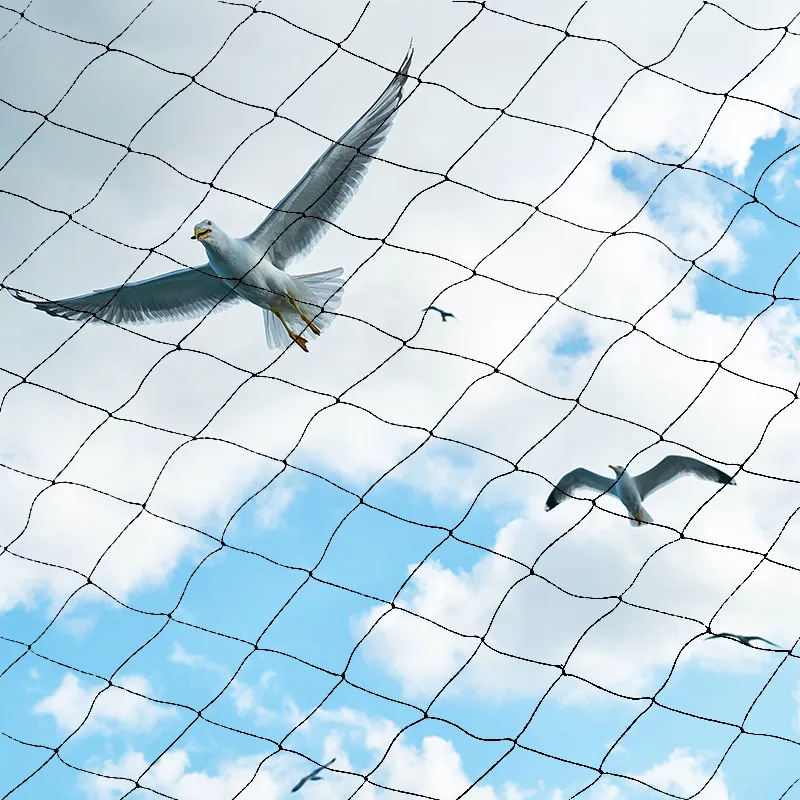
Figure 2: Close-up of durable knotting for maximum strength and bird deterrence.
- Exceptional UV Stabilization: Unlike standard netting, our bird mesh incorporates advanced UV inhibitors, achieving superior resistance to solar radiation. This translates to an extended service life of 5-10 years, drastically reducing the frequency and cost of replacement compared to conventional nets that degrade within 1-3 years. Accelerated weathering tests demonstrate minimal degradation over simulated decade-long exposure.
- High Tensile Strength & Durability: Constructed from virgin HDPE, our netting exhibits outstanding tensile strength (exceeding 250 lbs per 100 sq ft). This high breaking load ensures the netting can withstand environmental stressors, strong winds, hail, and the persistent efforts of larger birds without tearing or sagging. This robust construction is vital for maintaining an effective physical barrier over extensive areas.
- Chemical & Corrosion Resistance: The inert nature of HDPE renders our netting highly resistant to a broad spectrum of chemicals, including agricultural pesticides, fertilizers, acids, and alkalis. This non-corrosive property is critical for longevity in industrial environments, coastal regions, or agricultural settings where chemical exposure is common, ensuring the integrity of the net for birds for many years.
- Optimal Mesh Aperture & Bird Exclusion: The precise 3/4-inch square mesh aperture is scientifically determined to be effective against a wide range of common pest birds, including pigeons, starlings, and sparrows, without posing a risk of entanglement. This specific sizing ensures humane exclusion while maintaining visual unobtrusiveness.
- Lightweight & Easy Installation: Despite its heavy-duty classification, the polymer construction results in a lightweight material, simplifying handling, installation, and reducing structural load requirements. This translates to faster deployment and lower labor costs for installation teams.
- Low Maintenance Requirement: Once installed, the netting requires minimal maintenance. Its smooth, non-porous surface resists dirt, dust, and avian droppings, making cleaning infrequent and straightforward. The material is also resistant to mold, mildew, and rot.
- Cost-Effectiveness & ROI: While initial investment might be slightly higher than inferior products, the extended service life, reduced maintenance, and superior protection offered by our bird mesh deliver a significantly lower total cost of ownership and a rapid return on investment by preventing costly bird-related damages and disruptions.
These technical attributes ensure that our bird mesh provides a reliable, long-term, and high-performance solution for comprehensive avian exclusion, directly contributing to operational efficiency and asset preservation.
Vendor Comparison: Why Choose Our Bird Mesh
When evaluating bird control solutions, selecting the right vendor is critical. While numerous options exist, our commitment to quality, technical superiority, and comprehensive support sets our heavy-duty bird mesh apart. The following comparison highlights key differentiators between our premium offerings and typical market alternatives.

Figure 3: Installation of bird mesh for large-scale agricultural protection.
| Feature | Our Heavy-Duty Bird Mesh | Typical Market Alternatives |
|---|---|---|
| Material Composition | 100% Virgin HDPE with advanced UV stabilizers | Recycled plastics, basic polypropylene, limited UV additives |
| UV Resistance Rating | Exceptional (5-10 year stable performance) | Moderate to Poor (1-3 year degradation) |
| Tensile Strength | High (e.g., >250 lbs/100 sq ft) for maximum durability | Lower (prone to tearing, sagging) |
| Construction & Knot Integrity | Robust knitted/knotted design, heat-set for stability | Loosely woven, prone to unraveling or deformation |
| Chemical & Environmental Resistance | Excellent against most chemicals, mold, mildew, rot | Vulnerable to degradation from chemicals and organic growth |
| Warranty & Support | Comprehensive product warranty & expert technical support | Limited or no warranty, minimal technical assistance |
| Customization Options | Available for mesh size, color, dimensions, and material blends | Standard sizes only, little to no customization |
| Total Cost of Ownership (TCO) | Lower due to extended service life and reduced maintenance | Higher due to frequent replacement and associated labor costs |
Choosing our heavy-duty bird mesh is an investment in long-term reliability and cost-efficiency. Our focus on engineering excellence and stringent quality control ensures that clients receive a product that not only meets but exceeds industry expectations for avian control.
Customized Solutions for Unique Requirements
Recognizing that standard products may not always address the unique challenges of every B2B application, we specialize in providing tailored bird mesh solutions. Our engineering team collaborates closely with clients to develop custom specifications that precisely meet the demands of their specific projects, optimizing for performance, cost-effectiveness, and operational integration.
Customization options for our net for birds include:
- Varied Mesh Apertures: While 3/4 inch is standard, we can produce mesh with finer or wider apertures to target specific bird species or accommodate distinct ventilation requirements. For example, smaller mesh sizes for sparrow or swallow exclusion, or larger for pigeon control in less stringent environments.
- Material Blends & Colors: Beyond HDPE, specialized polymer blends can be formulated for enhanced properties such as increased fire retardancy (conforming to UL94 standards), superior chemical resistance, or greater translucency. Custom colors can also be provided for aesthetic integration or specific safety signaling.
- Dimensions & Reinforcement: We can manufacture bird mesh in custom widths and lengths to minimize seams and waste for large-scale projects. Furthermore, perimeters can be reinforced with heavier denier twine or integrated rope edging for applications requiring extra tensile strength at attachment points.
- Integration with Support Systems: Our team can advise on compatible fastening systems, tension cables, and framework designs to ensure seamless integration of the netting with existing or planned infrastructure.
- Specific Testing & Certifications: For highly regulated industries, we can arrange for additional third-party testing and certification to meet specific regional or industry-specific compliance requirements (e.g., FDA compliance for food processing facilities, specific impact ratings).
Our collaborative approach ensures that every customized bird mesh solution is not just a product, but a precisely engineered asset designed to solve complex avian control challenges efficiently and effectively.
Application Case Studies: Proven Efficacy
The real-world performance of our bird mesh is best demonstrated through its successful deployment in challenging industrial and agricultural settings. These case studies highlight the tangible benefits and return on investment achieved by our B2B partners.
Case Study 1: Vineyard Protection in California
A large vineyard spanning 150 acres in California faced annual crop losses of 10-15% due to extensive bird damage, primarily starlings and robins. Traditional methods like noisemakers and reflective deterrents proved ineffective. Our solution involved installing a custom-sized, UV-stabilized 3/4-inch bird mesh system over key sections of the vineyard. Post-installation analysis over two harvest seasons revealed a reduction in bird-related crop damage to less than 1%, resulting in an estimated 12% increase in yield and a full ROI within 18 months. The client lauded the durability and ease of maintenance of the net for birds.
Case Study 2: Solar Farm Avian Exclusion in Arizona
A 50 MW solar power plant in Arizona experienced recurring operational inefficiencies due to bird droppings on solar panels, leading to significant power output reduction and frequent, costly panel cleaning. Pigeons and doves were the primary culprits. We designed and supplied a comprehensive bird mesh system to create exclusion zones around critical panel arrays and substations. The heavy-duty netting, selected for its extreme UV resistance in the harsh desert environment, reduced cleaning cycles by 70% and contributed to a 5% increase in average daily power generation within the protected areas. This resulted in substantial operational savings and enhanced energy output.
Case Study 3: Warehouse Contamination Prevention for Food Distributor
A major food distribution center with an expansive open-bay warehouse encountered persistent challenges with sparrows and pigeons nesting within the structure, leading to product contamination and potential health code violations. Installing our 3/4-inch bird mesh across all entry points, loading docks, and above sensitive storage areas completely eliminated bird access. This preventative measure ensured compliance with stringent food safety regulations, drastically reduced product spoilage due to droppings, and improved overall warehouse hygiene, leading to a significant reduction in labor previously spent on cleaning and pest control. The solution proved to be a humane and highly effective long-term deterrent for a bird in net problem.

Figure 4: Securely installed bird mesh protecting a commercial building facade.
These examples illustrate the broad applicability and compelling economic benefits of investing in high-quality bird mesh for critical B2B operations.
Frequently Asked Questions (FAQ)
Q: What is the expected lifespan of your heavy-duty bird mesh?
A: Our heavy-duty bird mesh is manufactured from virgin HDPE with advanced UV stabilizers, providing an estimated service life of 5-10 years, depending on environmental conditions and proper installation. This significantly surpasses the longevity of standard netting products.
Q: Is the netting humane for birds?
A: Yes, our bird mesh is designed as an exclusionary barrier, not a trap. The specific mesh aperture (e.g., 3/4 inch) is chosen to prevent birds from passing through while being large enough to avoid entanglement, ensuring a humane deterrent solution.
Q: Can this netting withstand harsh weather conditions?
A: Absolutely. Our netting is engineered for extreme weather. The HDPE material is inherently resistant to moisture, extreme temperatures (-40°C to +80°C), and strong winds. The robust construction and UV stabilization ensure its integrity against hail, snow, and intense solar radiation, preventing a bird in net issue due to net failure.
Q: What are the lead times for orders?
A: Standard product lead times typically range from 3-7 business days for processing and dispatch, with shipping times varying based on destination. For customized orders, lead times will be provided upon project scope finalization, generally within 2-4 weeks due to specialized manufacturing requirements.
Lead Time, Warranty, and Customer Support
Lead Time & Fulfillment
We understand the critical nature of project timelines. For our standard 7 x 50 Feet Heavy Duty Bird Netting, orders are typically processed and ready for shipment within 3-7 business days. For larger bulk orders or specialized custom dimensions, lead times will be communicated clearly during the quotation process, ensuring transparency and efficient project planning. We maintain strategic inventory levels to support prompt fulfillment for common specifications and leverage robust logistics networks to ensure timely delivery to your site.
Warranty Commitments
Our heavy-duty bird mesh products are backed by a comprehensive 5-year limited warranty against material defects and premature UV degradation under normal operating conditions. This warranty reflects our confidence in the superior quality and durability of our manufacturing processes and materials. Full warranty terms and conditions are available upon request, providing our clients with peace of mind regarding their investment in our protective net for birds solutions.
Dedicated Customer Support
Our commitment extends beyond product delivery. We provide dedicated technical support to assist with product selection, installation guidance, and troubleshooting. Our team of experts is available via phone, email, and live chat to answer any queries and ensure successful project implementation. We partner with our B2B clients, offering ongoing assistance to maximize the performance and longevity of their bird mesh installations. For immediate assistance, please refer to our contact page on yjwiremesh.com or reach out to your dedicated account manager.
References
- ISO 9001:2015 - Quality Management Systems - Requirements. International Organization for Standardization.
- ASTM D638 - Standard Test Method for Tensile Properties of Plastics. ASTM International.
- ASTM G154 - Standard Practice for Operating Fluorescent Ultraviolet (UV) Lamp Apparatus for Exposure of Nonmetallic Materials. ASTM International.
- Food and Agriculture Organization of the United Nations (FAO). (2022). "Economic impact of bird damage in agriculture."
- Renewable Energy World. (2023). "Avian Concerns and Solutions in Large-Scale Solar Power Generation."
-
Anti Hail Net | UV-Stable, High-Strength Orchard ShieldNewsNov.17,2025
-
Anti Bird Netting – UV-Stable, Durable, Humane ProtectionNewsNov.17,2025
-
Welded Wire - Durable, Rust-Resistant Mesh, Custom SizesNewsNov.17,2025
-
Garden Mesh Sun Shade – UV-Resistant, Durable, Custom SizesNewsNov.17,2025
-
Bird in Net Solution: Humane, UV-Resistant Bird NettingNewsNov.17,2025
-
Stainless Steel Filters: Durable, Washable, High-FlowNewsNov.10,2025





